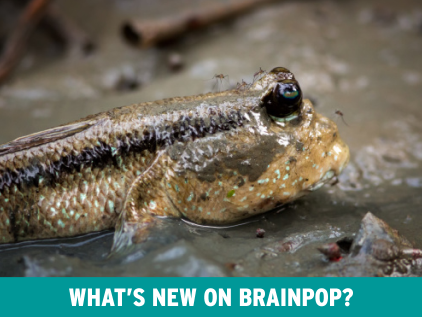Shelf Life is a new monthly video series from the American Museum of Natural History. The AMNH is sharing its vast resources with everyone, and you don't even have to go to New York to see them. Most of the videos are on rarely-seen items from their collection.
"Dive deep inside the Museum's collection to discover the past, present, and future of its approximately 33 million artifacts and specimens in this new series with original monthly videos." - AMNH
Right now there are 3 episodes out, with a new one being posted each month. Episode One is entitled
33 Million Things and gives you a glimpse at all AMNH has to offer. Episode Two,
Turtles and Taxonomy, talks about the science of classification.
Six Ways to Prepare a Coelacanth is the third episode. This one focuses on prehistoric fish. Episodes to come include: Skull of the Olinguito and How to Time Travel to a Star.
This post is cross posted on my technology blog, The Tech Savvy Science Teacher
.jpg)
 This past week my students have been working on a 3 day long crime scene scenario. The students had a blast doing it. I wish I could share the kit with you but it seems that the website is no longer active (I've made some inquiries to see if it's still be offered). It was a kit called Crime Scene Kids - Anatomy of a Death. What I like about it is that makes students think critically. There are some red herrings in there too to throw them off. This scenario has students reading and analyzing witness testimony, listing to answering machine message, shoe print, fingerprint and handwriting analysis and some "chemical" analyses.
This past week my students have been working on a 3 day long crime scene scenario. The students had a blast doing it. I wish I could share the kit with you but it seems that the website is no longer active (I've made some inquiries to see if it's still be offered). It was a kit called Crime Scene Kids - Anatomy of a Death. What I like about it is that makes students think critically. There are some red herrings in there too to throw them off. This scenario has students reading and analyzing witness testimony, listing to answering machine message, shoe print, fingerprint and handwriting analysis and some "chemical" analyses. I hope to be able to update this post with a link to the fun activity. Maybe this is an opportunity for me to create my own crime scene activity to share with all of you!
I hope to be able to update this post with a link to the fun activity. Maybe this is an opportunity for me to create my own crime scene activity to share with all of you! Do your students enjoy crime scene activities? Do you have a fun one to share?
Do your students enjoy crime scene activities? Do you have a fun one to share?



